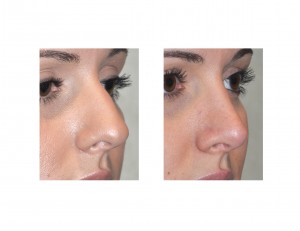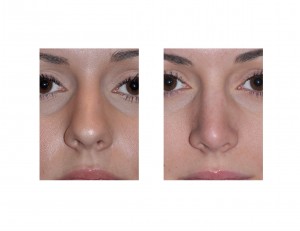Background: The shape of the nose is almost as different as each person’s personality. Not only is the nose different amongst each person but there are well known nasal shape differences amongst various races and cultures. The differences in nose shapes between different ethnic groups around the world is well recognized and is seen in the various shapes and proportionate relationships of the nasal bridge, the tip and the nostrils.
Often called an ‘ethnic nose’ this term implies any nose that is associated with different non-Caucasian races and deviates from the classical nasal anthropometric measurements, angles and ratios. This generally refers to a more straight dorsal line without a hump, a nasal tip that is not too wide or under- or projected and nostrils that are not too flared. Obviously what is deemed aesthetically desireable in nose shape is open to interpretation and has been highly influenced by the disproportionately large number of plastic surgeons practicing in the U.S. and the influence of contemporary culture and media.
The Greek nose has been classically described as being perfectly straight from the top to the bottom when viewed in profile without a hump or bump. At the time, it was thought of as as perfect nose shape. This is well illustrated in the statue of Michaelangelo’s David. (although close inspection does show a slight dorsal hump) It is speculated that the classic Greek nose never really existed, however, as a characteristic (straight) of the noses of ancient Greece but was really an aesthetic nose shape idealized that way in art. In reality, Greeks usually have a bump on the bridge of their nose and often are viewed as overall medium to large noses. The Greek nose fits into the larger category of Mediterranean noses which has many shape nuances within it.
Case Study: This 26 year-old Greek female wanted to improve the shape of her nose. She felt it was too big and was disproportionate to the rest of her face. She wanted the hump reduced and the tip narrowed but she did not want too much of a change. Her family was very concerned that the nose changes would be so great that she would not look like herself anymore. Presurgical computer imaging was done to get a feel for how much change would be acceptable.



Case Highlights:
1) Many Greek noses have a hump that creates a convex dorsal line. This makes the nose look too big.
2) With this cartilaginous hump overgrowth often comes a wider and overprojected tip as well. This makes the nose tio lack refinement.
3) An open rhinoplasty can effectively reduce an osteocartilaginous hump, straighten the dorsal line and narrow the nasal tip for an overall more balanced nose.
Dr. Barry Eppley
Indianapolis, Indiana


